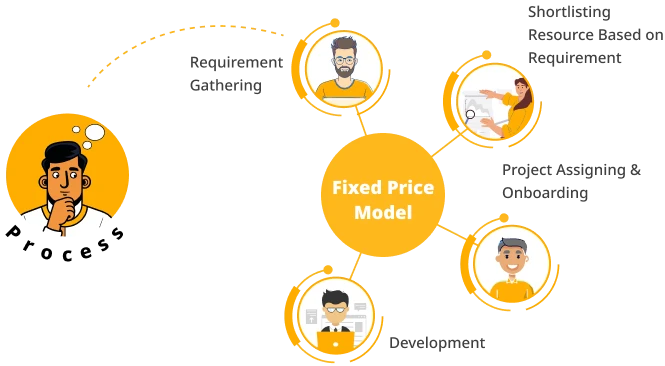At ValueCoders, we create secure, high-performance web apps that drive growth and deliver exceptional user experiences. Whether you’re a startup or enterprise, we turn your vision into scalable solutions that make an impact.

Professional, reliable, and results-driven – they delivered exactly what we needed, on time and within budget.
- James
Our skilled team excels in every aspect of web testing, from functional and automated to performance testing, delivering top-notch web applications with unmatched quality—all at a budget-friendly price.
It identifies and fixes coding errors and improves user experience.
It safeguards your app against vulnerabilities and ensures safety standards.
With ease of use of your web application, we ensure it aligns with your users’ needs.
To provide consistent performance, we test your app across all platforms.
Our experts simulate heavy user traffic to evaluate how your app performs.
We ensure your web application complies with the standards
Let's discuss your project together. We at ValueCoders can turn your project idea into an amazing digital product with a free consultation.

We partner with you to develop web applications that are robust and reliable. We use top-notch tools to identify issues early on, ensuring your app performs well. This puts you in a new league, giving you a major competitive edge.
We ensure that your business needs drive our test strategy, scenario, data, and user stories.
We adopt an agile approach and always prioritize testing as per the possible damage the defect in an app can cause, when discovered by a user.
We pay importance to keep all the testing plans, specifications, reports, and descriptions well-documented.
We have an integrated manual and automated testing approach for better results in less time.
We Are India’s Top
We enable businesses across the globe to scale, transform, and gain a competitive advantage. We are acknowledged in the Indian web application testing industry for our USPs.
We cater to all their diverse technology requirements, from startups to enterprises, software companies to digital agencies, and SMEs to governments. Our commitment to quality has helped us lead the market, becoming the top mobile application testing services company.
Let's break down complex IT issues into actionable solutions you can understand.
Partnering with businesses in diverse sectors to unlock new avenues for growth and innovation.
Our software quality assurance specialists are proficient in a wide range of tools and technologies, including:
We specialize in engineering custom software that's both stable and secure, using a variety of tech tools.
Dive into bi-weekly sprints and rollouts aligned with project timelines.
Combined team tackles tasks, fulfilling user stories and sprint goals.
Daily check-ins led by the Scrum Master to discuss progress and tackle challenges.
Quality Engineers rigorously test new features, ensuring seamless integration.
Our team keeps the sprint backlog updated, staying on track to meet objectives.
Post-sprint reflections to refine strategies and enhance future sprints.
Choose from our flexible hiring models designed to fit your needs and budget.
For businesses with well-defined project scope and requirements.

For businesses with long-term project requirements or complex development process. They get more control of the process.

For businesses looking to pay for completed project instead of committing to fixed project cost.

Android app development is booming, and it doesn’t seem to be slowing down anytime soon. With an estimated 133 million
Learn MoreThe application's main motto is to notify users about upcoming events and collect donations.
With this app user can search flights based on entered search criteria, where the result page will show the list of flights with their CO2 emission detail.
Are you a startup, an Entrepreneur, or an enterprise? Or a mobile app developer who wants to know about the
Learn More
Web application testing has become increasingly popular as businesses try to provide their customers with an interactive and dynamic experience. Regardless of the business size, all use web application testing before launching a product.
Testing helps identify vulnerabilities, prevent unauthorized access, and protect sensitive information. A proactive security testing approach ensures that all features of the web application operate securely and consistently. With increasing threats and the critical need for data protection, businesses must adopt thorough security testing measures to safeguard their operations and reputation.
Identifies Vulnerabilities
Protects Against Cyberattacks
Ensures Compliance
Maintains Business Availability
Reduces Long-Term Costs

Here’s a comprehensive comparison to help you understand these differences:
Technology Requirements
Access and Environment
Cross-Platform Compatibility
Tools and Automation
Complexity of Testing
Performance and Security Testing
Deployment and Updates
CrossBrowser Compatibility
Ensuring a web application works seamlessly across browsers is complex due to differences in how browsers render code.
Mobile Device Compatibility
With countless devices, screen sizes, and operating systems, testing for mobile compatibility is daunting.
Security Vulnerabilities
Web applications are prime targets for cyberattacks, making security testing critical.
Performance Bottlenecks
Handling high traffic and large datasets without crashing is a major challenge.
Integration Issues
Web applications often rely on APIs and thirdparty tools, which can lead to integration problems.
Usability and Accessibility
A user-friendly and inclusive interface is crucial but challenging to achieve.
Constant Updates and Changes
Frequent updates can introduce bugs and disrupt user experience if not managed well.
Testing Scalability
As user numbers grow, the application must scale efficiently to handle increased demand.
Website testing isn’t just a one-off task—it’s a full-blown operation with four crucial stages: planning, execution, monitoring, and closing. Here’s the no-fluff breakdown:
Planning: Laying the Groundwork
This is where the strategy comes together. Define the scope, goals, and testing tools. Figure out what you’re testing—features, compatibility, security—and lock in a clear roadmap. Without planning, you’re just shooting in the dark.
Execution: Putting the Plan into Action
Time to roll up your sleeves. Execute test cases, simulate user scenarios, and push your website to its limits. Catch bugs, log them, and refine the code. This stage is where all the real work happens.
Monitoring: Keeping an Eye on Things
It’s not enough to test—you need to watch how things perform under pressure. Track results, analyze performance, and ensure every feature works as it should. Any issues? Tackle them here before they become public disasters.
Closing: Wrapping It All Up
Testing isn’t done until the loose ends are tied. Validate fixes, double-check the results, and document everything. Once you’ve ticked all the boxes, your website is finally ready to face the world.

Here, we have listed the complete application testing checklist:
Skipping Research
Ignoring Experience
Not Asking for References
Neglecting Budget Planning
We customize KPI suites for each testing project about its specifics (development methodology, appropriate testing types, software architecture under test, etc.).
Ans. ValueCoders has been helping businesses with their web application development and web application testing needs for 20+ years. We have top industry testing experts to work on your application and ensure that it is bug free. Additionally, we use the latest tools to perform manual and automated testing on your web application.
Clients trust ValueCoders for our expertise, excellent track record, and highly experienced team.
Ans. Yes, we test an SOA web application through different types of tests.
Unit tests are used to test individual units or components in isolation. Integration tests are used to test how different components work together. System tests are used to verify that the entire system works as expected. Finally, performance tests are used to measure the system’s performance under load.
Ans. When testing a website, a few configurations need to be considered to ensure comprehensive coverage.
First, the web app itself needs to be tested. This includes testing functionality as well as UX/UI rules and standards.
Second, the server-side infrastructure needs to be tested. This includes ensuring that the various website components (e.g., application server, database) are all functioning correctly.
Third, the network connection between the user and the website must also be tested to ensure no issues. By testing all of these different aspects of a website, we can be confident that it will work properly for users regardless of their environment or device.
Ans. Yes, we do perform testing on web-based applications using Qtp. It is a very effective tool for automating web application testing. It allows us to create and run test scripts that can simulate user interactions with the application. This helps us identify defects in the application.
Ans. There are a few key stages that our app testing experts typically go through when starting app testing:
1. Pre-test Planning: This is where the testers set up their plan for how they’re going to test the app. They’ll identify which devices and platforms they’ll be testing on and what specific app areas they’ll be examining.
2. Execution of Tests: Once the testers have their plan, they’ll start running tests on the app. This can include checking for functionality, looking for bugs, and performing analysis.
3. Post-Test Analysis: After the tests have been completed, it’s time for the testers to do a thorough analysis of their results.
We are grateful for our clients’ trust in us, and we take great pride in delivering quality solutions that exceed their expectations. Here is what some of them have to say about us:

Co-founder, Miracle Choice

Executive Director

Director

Director
Trusted by Startups and Fortune 500 companies
We can handle projects of all complexities.
Startups to Fortune 500, we have worked with all.
Top 1% industry talent to ensure your digital success.



Let's discuss how we can bring your vision to life.